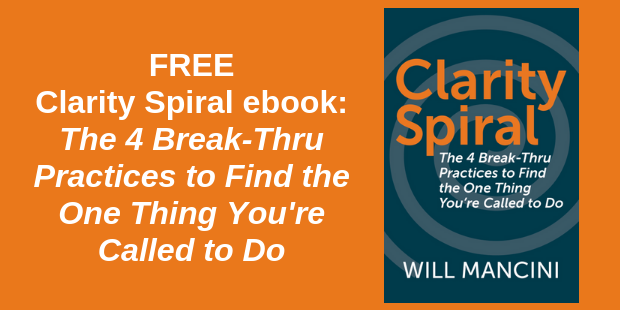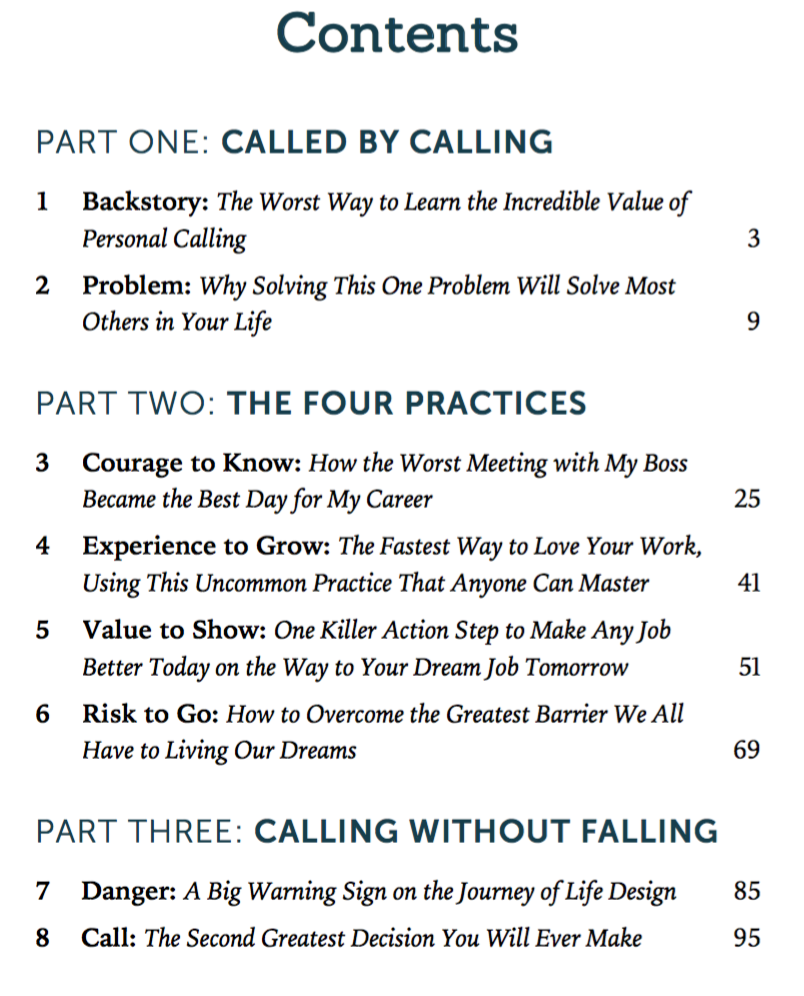
Life Design Essential #2: Name Your Personal Life Calling
We live in a world where every artificial thing is designed. Whether it is the car we ride in, the streets we drive on, the lights that illuminate the road, or the building that is our destination, some person or group of people had to decide on the layout, operation, and mechanisms of the journey described above.
Your life has a design, too.
Design doesn’t just work for cars and roads and streetlights and buildings, and all the hundreds of thousands of components that make those things up. You can use design thinking to discover the life God has uniquely created for you. It is a life that is meaningful, joyful, and fulfilling.
Several years ago, Auxano founder Will Mancini launched Life Younique, a training company that certifies church leaders to offer gospel-centered life design through their church. Will, along with co-founder Dave Rhodes, is passionate about helping people get life mission right – what exactly is the best way to know and name what God has created you to do?
THE QUICK SUMMARY – More by Todd Wilson
More meets Christians where they’re at, acknowledging the roots of their discontent and demonstrating how to move from inspiration and desire into action. Church strategist and ministry activator Todd Wilson shows how all believers can live more abundant lives around the uniqueness of how they were made and what they are called to do.
Introducing a memorable vocabulary and an easy-to-use practical framework, More equips readers to embark on a journey of discovering their unique personal calling. It enables readers to answer three of the most important and profound questions we all naturally ask.
(1) “Who am I created to be?”
(2) “What am I created to do?”
(3) “Where am I to be best positioned to do it?”
The integrated answers to these key questions—the BE-DO-GO of a person’s life—represent the core dimensions of personal calling. Inspiring and challenging, More gives readers permission and encouragement to engage in the journey God has solely for them.
A SIMPLE SOLUTION
“Many people aren’t living the life they were meant to live because they don’t know who they are or what gifts God has given them.” The author of those words, Tom Paterson, goes on to say, “God has a plan for your life. In creating who you are, God simultaneously built into your life what you are to do.”
Redefine every day with the deep sense of knowing your special assignment from God.
We are called not just to follow Jesus (common call to all people) but we are called to accomplish something specific as a one-of-a-kind saint (your special assignment from God).
Your mission in life is something created, designed, and given by God.
Our primary or general calling gives us the fullness of Jesus and a context for what we are to accomplish when we go. This overflows to our secondary or unique calling, equipping us to play our unique part. This comes, not by force of will, but rather as a movement of love, one act of kindness at a time.
Our unique identity of BE is the first element in our secondary or unique personal calling. We must discover it, embrace it, and allow it to guide how we steward the time, talent, treasure, and influence God gives us in doing good works and deeds. It is from the overflow of our unique design that God brings our unique good works to life.
While we can never completely define the fullness of our uniqueness, we can seek to express it in a short phrase. Our unique identity is a word or phrase that seeks to capture the fullness of our unique design in very simple terms. You might be a creative storyteller, or an encouraging coach, or a restorer of broken relationships, or a collaborative networker. The possibilities and descriptor are endless and reflect the breadth of God’s creativity brought to life in our uniqueness.
How do we discover our unique identity? We look for clues. In coaching people to discover their unique design, several practical tips have proven helpful. These include:
Our lives are like a book. The clues of our unique identity are spread throughout the story being written in our lives, from birth to now.
The clues transcend all domains of life including personal, family, work, church, and community. The characteristics are illuminated 24/7. We can’t turn them off.
There are assessment tools we can use to help uncover and then magnify the clues.
Todd Wilson, More
A NEXT STEP
Write each phrase above in bold on three chart tablets. Use the comments below, adapted from More author Todd Wilson, to help you explore each phrase. Write you thoughts on the chart tablet as you process them.
Our lives are like a book. If we desire clarity on who we are and where our story is headed, we should first look to the past for clues revealed in what’s already been lived. The clues scattered throughout our past shed light on God’s unique workmanship and his divine plans for our future.
Recall moments in your past that stand out vividly in your imagination. List them on the chart tablet, and consider what deeper insights they can reveal to you in who you are uniquely made to be.
The clues transcend all domains of life. Write the following “domains” of life on the chart tablet: personal, family, work, church, and community. The story of your life (#1) will have core characteristics that jump into action across many, if not all, of our domains of life. Write these down under each domain.
Assessment tools. There are numerous self-assessment tools that can enhance your discovery and understanding of your personal wiring. You’ve probably completed several over the years.
Refer to assessments you have done and can access, and write the top three to five characteristics from each that you agree with.
Group similar or like words into a single word or short phrase that best describes each.
Does the resulting word or short phrase resonate with you and help you clarify your personal life calling?
Excerpt taken from SUMS Remix 101-2, released September 2018.
This is part of a weekly series posting excerpts from one of the most innovative content sources in the church world: SUMS Remix book excerpts for church leaders.
Each issue SUMS Remix takes a practical problem in the church and looks at it with three solutions; each solution is taken from a different book. Additionally, a practical action step is included with each solution.
As a church leader you get to scan relevant books based on practical tools and solutions to real ministry problems, not just by the cover of the book. Each post will have the edition number which shows the year and what number it is in the overall sequence. (SUMS Remix provides 26 issues per year, delivered every other week to your inbox).
>> Subscribe to SUMS Remix <<

Tags: Life Design, More, Personal Life Calling, SUMS Remix, Todd Wilson
























